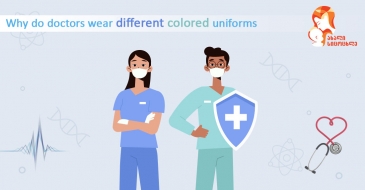
According to psychologists, the majority of people remember doctors, hospitals, and health at the mention of the white coat.
Probably you can't even imagine a doctor without a white coat. Generally, this color relieves tension, mobilizes a person, helps thinking, and is associated with cleanliness and trust. You might be surprised to know that medicine and white coat weren’t always inseparable.
Where did the idea of a doctor to wear a white coat come from?
Until the second half of the 19th century, doctors wore only black coats. The color had a practical purpose, and the blood was easily concealed because of dark color.
Albeit, at the end of the 19th-century new era, starts in medicine – A white color becomes a symbol of cleanliness. Hospitals are equipped with new, white bed-sheets, nurses with white caps and as for the doctors, they are provided with coats of this color. Color changes of the special attire also served for the restoration of trust towards medical workers and the development of new hand hygiene skills (sterilized handwashing ),– this was a progress in the healthcare system, a time of transition from primitive medical tools to practical work on the level of science.
Events progressed rapidly, and the work of art is a proof of that. American realist painter Thomas Eakins addressed changes with paintings. Two pieces of work ("The Gross Clinic" and “The Agnew Clinic”) created with a 14 years interval are one of the excellent examples depicting changes in the medical sphere.
Patient’s attitude towards a white coat
In almost every country of the world, doctors have worn white coats since the 20th century as a symbol of peace, ethics, and purity.
An interesting study was conducted in the United Kingdom. Majority of patients participating in the study sincerely stated that they prefer for doctors to wear a white coat, whereas the majority of doctors prefer surgical attire – scrubs
Journalists of the "Medical Journal of America" even carried out an experiment on this matter.
The authors of the study presented four photos of the same doctor to 400 patients.
- Doctor in a jacket, tie and with a stethoscope;
- Doctor in a white coat, shirt, tie and with a stethoscope;
- Doctor in a scrub, sports shoes, and with a stethoscope;
- Doctor in a t-shirt, jeans, sports shoes and with a stethoscope;
To the question “Which photo evokes trust in you and which doctor would you choose for a consultation?” , 76% of the respondents answered that they’d see a doctor in a white coat (photo N2). The follow-up photo was N3 and the last one – N1. Only 4,7% of participants would entrust their health to a doctor who’d show up in a t-shirt.
Wish you health!










